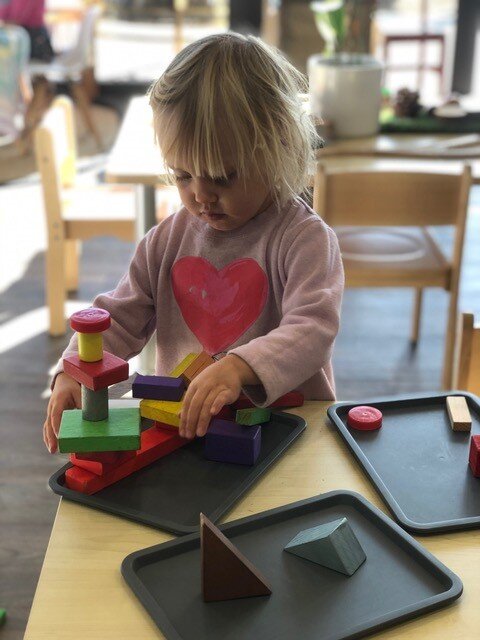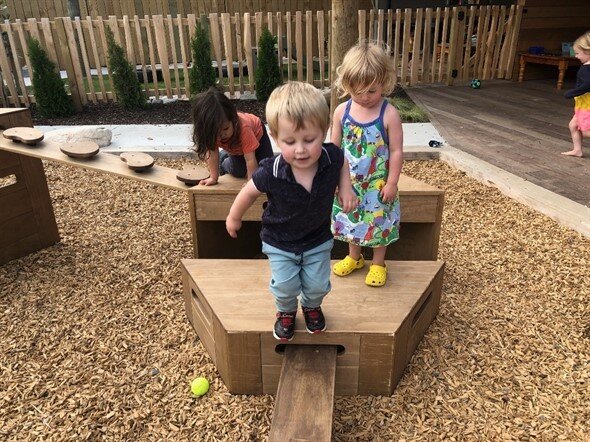Resilience - What is it and why is it important? Rachael Carty
Having resilience goes a long way in the current climate, the question is where did our resilience come from and how do we make sure our kids have bucket loads of it to help them deal with any difficulties (both big and small) that come up for them in the future.
As adults (and children) we are all going through a lot at the moment and how resilient we are is one of the things that is helping us cope, or not cope as the case may be for some.
Rachael (Teacher The Hive, Gems Rata) has outlined below ways in which you can help your children develop their resilience.
Resilience can be defined as: “the capacity to recover quickly from difficulties”. In terms of people (especially children), it is related to the capacity to adapt well when faced with adversity, stress, or change. It is to persist in difficult situations, problem-solving and learning new ways to face challenges instead of simply giving up. It involves the ability to regulate emotions, control impulses and tackle problems, learning from mistakes. It is the ability to get back up when you are knocked down (literally or by life’s adversities) and come back as strong, if not stronger, than before. When you think about it, our little ones show these capabilities throughout their earliest years; when a child is learning to walk they fall time and time again, getting back up and persevering until they master the skill. When a toddler really wants to climb something, they keep trying and problem-solving different ways until they manage it. How then, can we help encourage and support the continued learning and development of resilience in our children in a range of situations, especially relevant in our current climate of change and the stress of the unknown.
To get an idea on how resilience works, we must understand a little about how the brain works. A simple way to look at it is the ‘Green Brain’/‘Red Brain’ model. The Green Brain (our cortex) is the ‘thinking’ part of our brain, focussed on such things as impulse over-ride, planning, abstract thinking, empathy; it is our ‘management’ system. Our Red Brain (brainstem/limbic system) is more about survival and emotions; it is reactive, irrational, impulsive, selfish; it is our animal brain. During the early years, the Red Brain is more in control of our management than the Green (a two-year-old’s Green Brain is only just starting to come online, so they are very quick to be Red Brain led!). When in a stressful situation our Red Brain can take over, leaving less room for thinking and more room for reacting – this is why a toddler may have a melt-down when they can’t find the right crayon, sock, random item. To us, Green-Brain-led adults we can rationalise that it isn’t that important and not something to be stressed over. To our Red-Brain-led child, their brain is telling them it is a life or death situation – they aren’t ruled by thinking and logic, and their flight/flight response is activated which leads to meltdown. This can create a range of physical reactions such as distraction (looking around/not listening), an increase in blood to their large muscles (which can result in hitting/kicking/throwing), and seeming ‘out of control’. Until we can calm them back into a more Green Brain led state, (by helping them feel safe, loved, understood, thereby reversing the physiological changes that are activated by stress) we can help them learn the coping skills needed to be able to eventually do this themselves. Understanding all this helps us to understand why they are reacting as they do, and how to best support to help them develop resilience in a range of situations.
The most important thing in supporting resilience is relationship; a child needs a calm, attuned adult whom they are close to (you the parent or another adult they have a close relationship with, including a teacher). Remaining calm and helping a child through their stress response, letting them know you hear them, see them and understand them is important to helping them learn these skills. Give them what they need at that time to calm down, help hold space for them (this is the conscious act of being present, open, allowing and protective of what another person needs in that moment), and let them know you are there for them– this is not spoiling them. Thinking back to Green Brain/Red Brain, we cannot reason with a child while they are in their Red Brain, we need to calm the physiological system first no matter what, and deal with any consequence/learning later once they are calm and back more in the Green Brain. This is the only way to change the behaviour and help build resilience as we support and train the brain to not react to their stress responses but to stop, think, and respond instead. This is a long, long process and requires us as adults to remain calm and repeat, repeat, and repeat our actions and support in order for the child to learn this. This can be a tough task as even adults struggle with stress responses – we all know what it is to react rather than respond in stressful situations, especially when someone pushes our buttons! For us, if we feel ourselves becoming stressed or annoyed, a good strategy is to pause and take a deep breath (or a few deep breaths!) as this allows us to lower our stress response, not get caught up in Red Brain but stay in Green, and to think and respond to the situations – everything we want our child to learn. This is modelling the behaviours and responses to the child, another great learning tool.
Here are some helpful strategies to work towards supporting resilience – in all ages not just our little ones:
Exercise – Exercise strengthens and reorganises the brain to make it more resilient to stress. One of the ways it does this is by increasing the neurochemicals that can calm the brain in times of stress. So go for walks and allow lots of running, jumping, climbing, outside rough and tumble play – anything that gets the body moving!
Mindfulness - Mindfulness creates structural and functional changes in the brain that support a healthy response to stress. It strengthens the calming, rational prefrontal cortex (Green Brain) and reduces activity in the instinctive, impulsive amygdala (Red Brain). Breath is important in helping calm our bodies – yoga (https://www.cosmickids.com/five-fun-breathing-practices-for-kids/) and breathing exercises are great. Also getting outside and appreciating nature is another great mindfulness tool, as you notice and appreciate the many beautiful aspects of nature unfolding around you, finding a sense of calm. It is being in the moment.
Acknowledge the Positives - Nurture that positive feeling in them – that one that reminds them they can do hard things. You’ll be doing this every time you acknowledge their strengths, the brave things they do, their effort when they do something difficult; and when you encourage them to make their own decisions. Being positive isn’t about always being happy, it is about knowing things will get better.
Nurture Optimism and Reframe - Acknowledge their disappointment, then gently steer them away from looking at what the problem has cost them, towards the opportunities it might have brought them. For example, right now they can’t go to the playground or see their friends but what are the good things right now? “I know you really wanted to see your friends at the moment but we have to help keep everyone safe. We’re so lucky we’re getting to spend all this time together. Can you think of all the fun things we can do at home?”
Model Emotions and help them find words - Bringing them into your emotional world at appropriate times will help them to see that sadness, disappointment and frustration are all very normal human experiences. When experiences are normalised, there will be a safety and security that will open the way for them to explore what those experiences mean for them, and experiment with ways to respond; “I feel sad today that I am missing my sister’s birthday, I’m going to call her for a chat to connect with her and help me feel better about it”. “Sometimes I feel angry too and I have to check my behaviour is ok and that I don’t shout or hurt anyone”. “Feeling sad is ok, we all feel sad sometimes… what is making you feel sad”? “I can see you’re angry but I won’t let you hit your sister. You could say ‘my turn please’”.
Let them try - It is in the precious space between falling and standing back up again that they learn how to find their feet. Exposure to stressors and challenges that they can manage during childhood will help to ensure that they are more able to deal with stress during adulthood. It allows for the activation of the sympathetic (fight/flight response) then parasympathetic nervous system (calming) in a safe, tolerable way. As this is repeated over and over, resilience to stress (the response we have to it) is built up time and time again to enable us to ‘hold calm’ in situations. When they can’t quite reach that toy under the couch or figure out how to finish the puzzle don’t step right in. Help them problem solve how to do it themselves “It’s ok, let’s not hurry, what if we tried it this way, no that didn’t work, what’s another way we could try”? Obviously, if they really need you and are getting overly stressed, step in and offer to help “I can see you’ve tried really hard would you like me to help you finish it?”. This connection and attunement by the adult is important – a little stress is good, but too much can lead to meltdowns.
Help develop a Growth Mindset – Research has found that children who have a growth mindset (the belief that people have the potential to change) are more likely to show resilience when things get tough. It is the difference between believing you can’t succeed at something no matter what (fixed mindset) as opposed to believing if you keep trying you will get there eventually (growth). Helping a child realise that they ‘can’t do it yet’ as opposed to they ‘can’t do it’ is the difference between fixed and growth mindset.
Be calm. Breathe. Learn to respond rather than react. Support. Let them try.



